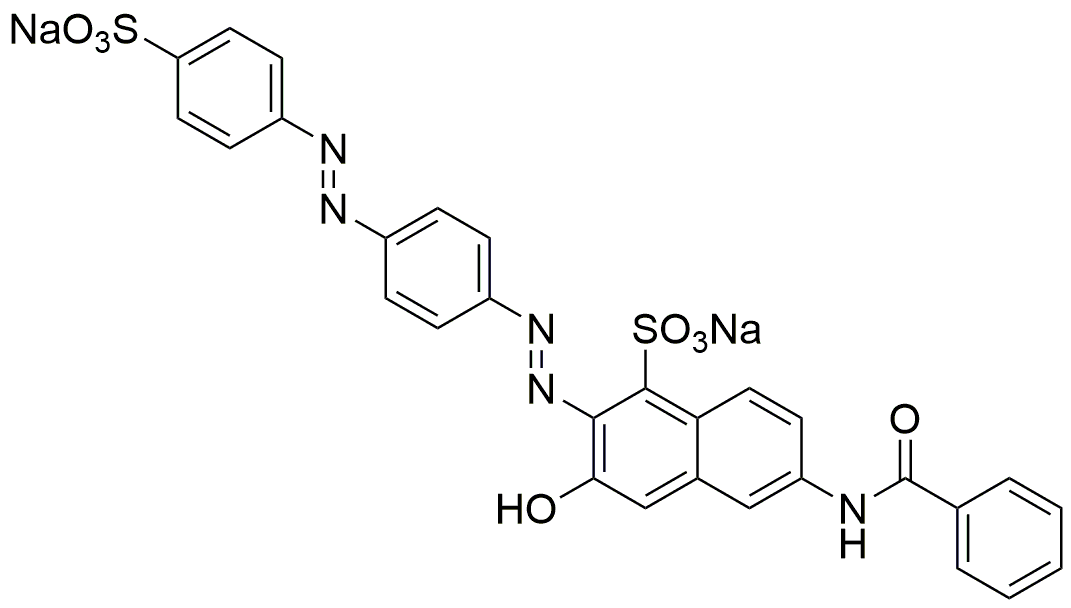Direct red 81 is widely utilized in research focused on:
- Dyeing Textiles: This chemical is commonly used in the textile industry for dyeing fabrics, providing vibrant red colors that are both appealing and durable.
- Biological Staining: In laboratories, it serves as a vital stain for biological samples, helping researchers visualize cellular structures under a microscope.
- Food Coloring: Direct red 81 is approved for use as a food colorant, enhancing the visual appeal of various food products while adhering to safety regulations.
- Cosmetic Applications: The compound is also found in cosmetic formulations, where it adds color to products like lipsticks and blushes, ensuring they meet consumer expectations for aesthetics.
- Research in Environmental Studies: It is used in environmental research to trace water pollution, helping scientists assess the impact of dyes on aquatic ecosystems.
General Information
Properties
Safety and Regulations
Applications
Direct red 81 is widely utilized in research focused on:
- Dyeing Textiles: This chemical is commonly used in the textile industry for dyeing fabrics, providing vibrant red colors that are both appealing and durable.
- Biological Staining: In laboratories, it serves as a vital stain for biological samples, helping researchers visualize cellular structures under a microscope.
- Food Coloring: Direct red 81 is approved for use as a food colorant, enhancing the visual appeal of various food products while adhering to safety regulations.
- Cosmetic Applications: The compound is also found in cosmetic formulations, where it adds color to products like lipsticks and blushes, ensuring they meet consumer expectations for aesthetics.
- Research in Environmental Studies: It is used in environmental research to trace water pollution, helping scientists assess the impact of dyes on aquatic ecosystems.
Documents
Safety Data Sheets (SDS)
The SDS provides comprehensive safety information on handling, storage, and disposal of the product.
Product Specification (PS)
The PS provides a comprehensive breakdown of the product’s properties, including chemical composition, physical state, purity, and storage requirements. It also details acceptable quality ranges and the product's intended applications.
Certificates of Analysis (COA)
Search for Certificates of Analysis (COA) by entering the products Lot Number. Lot and Batch Numbers can be found on a product’s label following the words ‘Lot’ or ‘Batch’.
*Catalog Number
*Lot Number
Certificates Of Origin (COO)
This COO confirms the country where the product was manufactured, and also details the materials and components used in it and whether it is derived from natural, synthetic, or other specific sources. This certificate may be required for customs, trade, and regulatory compliance.
*Catalog Number
*Lot Number
Safety Data Sheets (SDS)
The SDS provides comprehensive safety information on handling, storage, and disposal of the product.
DownloadProduct Specification (PS)
The PS provides a comprehensive breakdown of the product’s properties, including chemical composition, physical state, purity, and storage requirements. It also details acceptable quality ranges and the product's intended applications.
DownloadCertificates of Analysis (COA)
Search for Certificates of Analysis (COA) by entering the products Lot Number. Lot and Batch Numbers can be found on a product’s label following the words ‘Lot’ or ‘Batch’.
*Catalog Number
*Lot Number
Certificates Of Origin (COO)
This COO confirms the country where the product was manufactured, and also details the materials and components used in it and whether it is derived from natural, synthetic, or other specific sources. This certificate may be required for customs, trade, and regulatory compliance.


